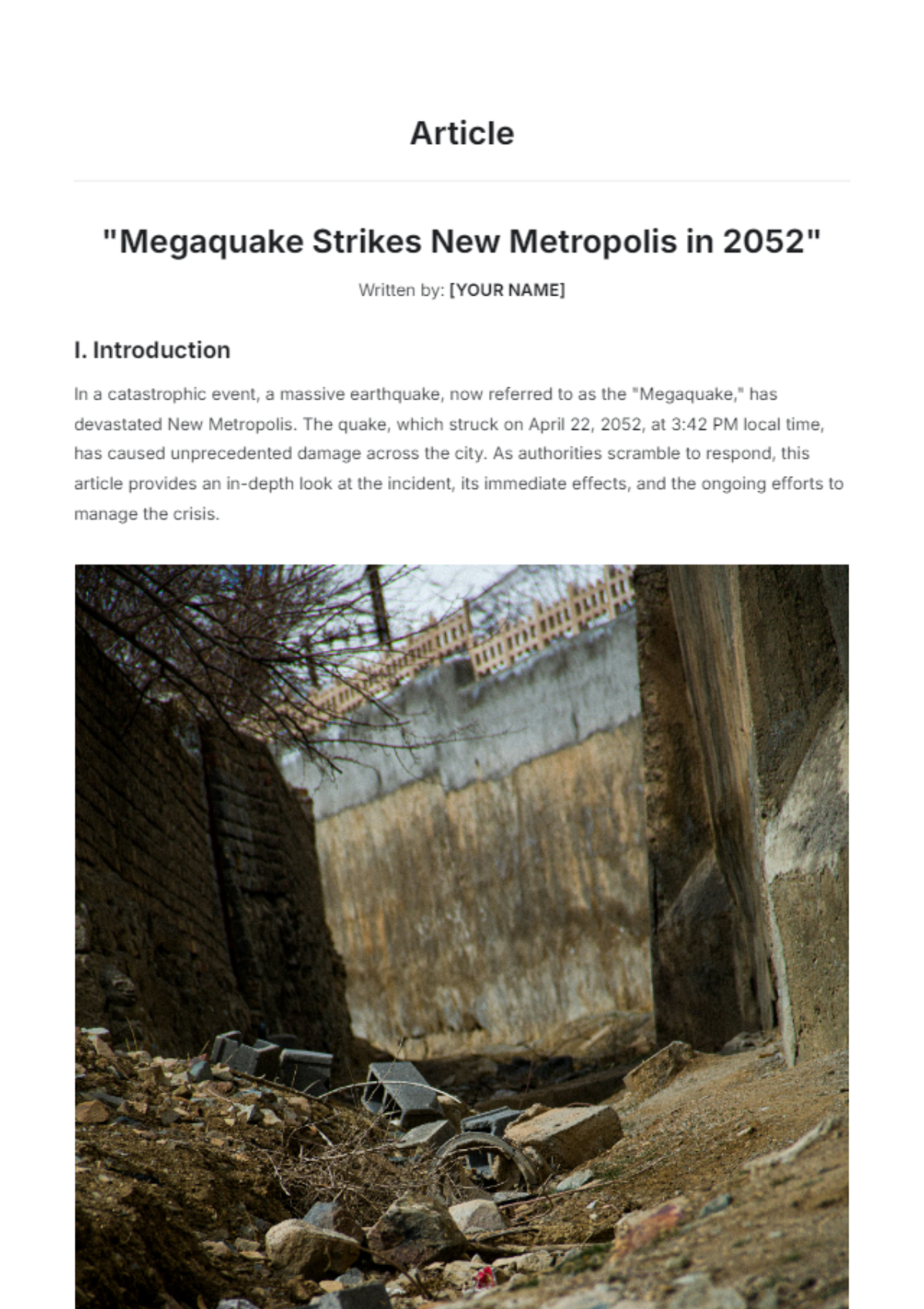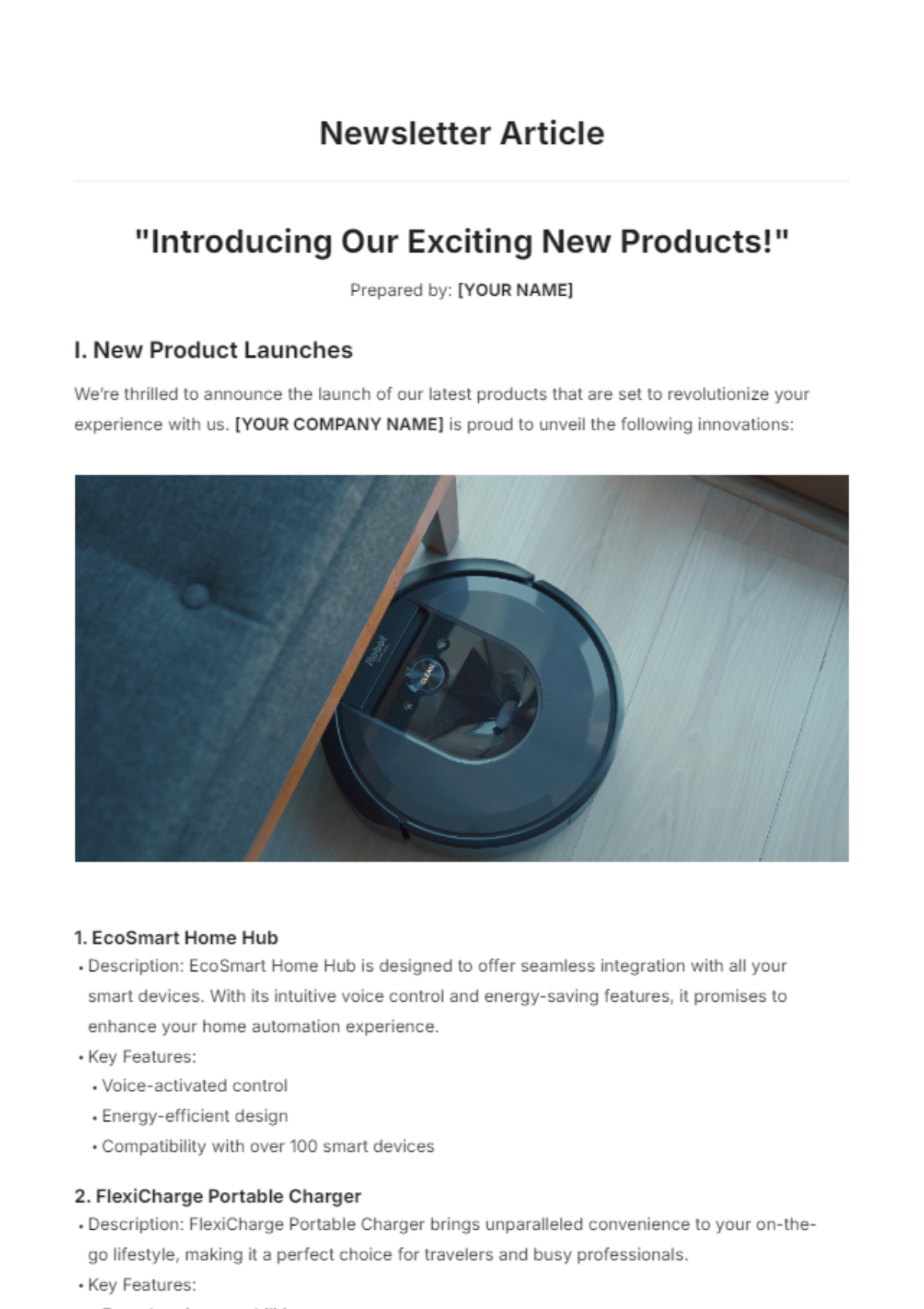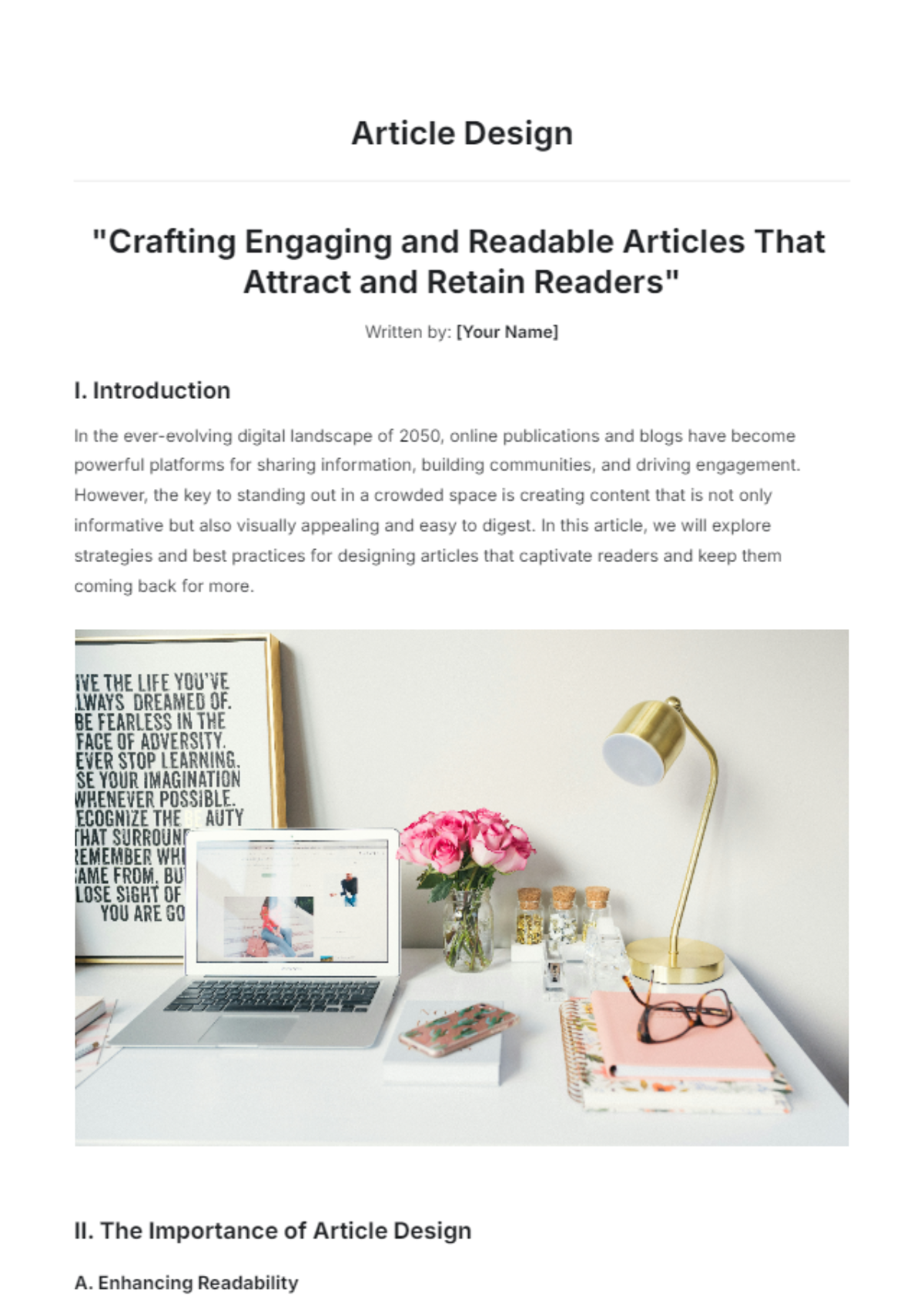Free Journal Layout Article
Create a professional journal article with Template.net's Journal Layout Article Template. This editable and customizable template offers a clear and organized layout for your research, covering all essential sections. Editable in our AI Editor Tool, it helps you format your article according to academic standards, ensuring a polished presentation for publication in scholarly journals.






























